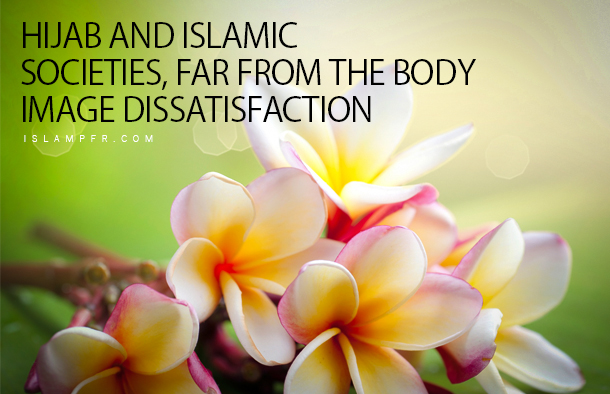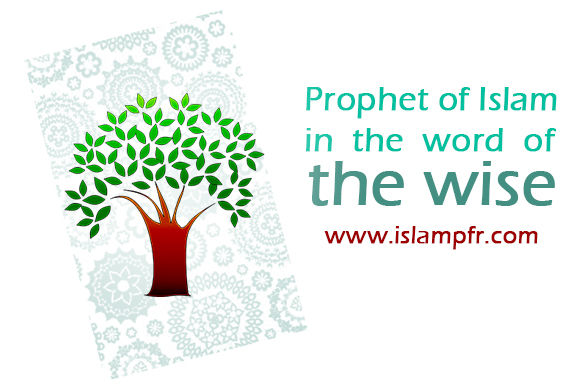Hijab, far from the body image dissatisfaction
Hijab and Islamic societies: far from the body image dissatisfaction and eating disorders of Westernised society
Body image is defined as “one’s satisfaction with his or her body.” 15
In Westernised society, body image dissatisfaction, eating disorders and other psychological disorders as a result of being unhappy with oneself are rampant. Media and society promote a certain kind of image of the “ideal woman”. This article will examine the incidence of these disorders, the reasons for this body image dissatisfaction and the way in which hijab and living in an Islamic society provide some protection from this panacea. One major consideration is of course the absence of values education in the West that are tied to a religious/cultural tradition. “Values” in the West seem to be largely taught through glossy magazines and mainstream media these days
First of all, here is a general overview of Islamic teachings regarding “diseases of the heart” (emotional /mental ailments), and also the Islamic attitude towards food. This entails discussing how wellbeing and contentment are defined in Islam
Imam Ali (PBUH) says in Nahjul Balagha: “More terrible than physical malady is the sickness of heart…better than wealth is physical health. More preferable than physical health is the piety of the heart.” 5
Although this is the Islamic point of view, it is of course also the universal, common sense approach to “wellness”; without psychological (mental, emotional) health, one is unable to partake fully in life, let alone be a productive working member of society, or parent. This is because psychological disorders affect the physical body and result in physical maladies, eating disorders being an obvious example
When a particular part of the body is sick the whole body is under terrible pain and life becomes difficult. Similarly when one is afflicted with a spiritual malady one feels remorse in this worldly life also. He continues to be afflicted even after his death…sometimes he is even inclined to commit suicide. The best prevention is to keep the heart pure from defects. 5
When a believer of one of the monotheistic religions becomes afflicted with an emotional/psychological disorder, he must worry also about the impact of this “disease of the heart” upon his hereafter, as our sins, flaws, afflictions must be accounted for in the hereafter
With feeble body there is very little chance of his soaring very high spiritually. 7
A feeble body is not just one that is weak, because it is being ill-fed; it is also one that has become weakened due to the impact of emotional/psychological stresses. A person who suffers from any psychological ailment, or even just a person who is afflicted by a ‘broken heart”, is unable to achieve their full potential, as their heart has become tainted by the affliction
It is narrated that the Prophet (PBUH)said: “If the heart is pure, the entire body will also be pure. If the heart has wickedness, the nature of the person too will be depraved.” 4
This is acknowledgment that emotional health is key to our overall well-being. Islam suggests, “Reason dictates and religion commands us to make every effort to cure the disease of our heart. We must care more for the well-being of our heart.” 5
Specifically, regarding (healthy) eating, Islam prescribes the following
Imam Sadiq (PBUH) has been reported as saying: “If people are moderate in having food, they will have healthy bodies.” 3
Here are some statistics on body image dissatisfaction, and on eating disorders – it remains to be said that there is a relative wealth of information on the topic, with particular focus on these disorders in Western society, yet no concrete solutions have been put forward by researchers
- Up to one third of young Australian women experience episodes of binge or overeating 9
- 17 % of women reported episodes of overeating, 16 % reported binge eating and 10 % reported compensatory behaviours such as vomiting, use of laxatives or diuretics and fasting in an Australian study. 9
- In a survey of 803 American adult females, 50 % reported dissatisfaction with their physical appearance, specifically with their weight. 12
- Almost 80 % of the fourth grade girls in the US are watching their weight. 11
- In a study of 106 Australian school and university students, 94 % desire to weigh less than their actual weight. 13
However, strikingly, in another study, for only 2 % of an African-American sample, does beauty mean having an attractive face and body! 20 There is a different way of conceiving of beauty other than the “Western” idea that it is all in the looks.
Initially, though, let us conceive of this narrowly fixated Western model of beauty. For example, of one of the most popular toys for young girls, the Barbie doll, it is said that “the waist and stretched limbs caused the teenage girls in the West and other countries to avoid eating during their growth age.” 8 It is widely accepted that Western media, magazines exclusively promote the ideal woman as slim, even verging on thin. Sadly, it has also been reported in studies that “the emphasis placed on thinness in the West, besides resulting in negative self-evaluations, is considered to be an important factor in the aetiology of eating disorders.” 14 There is however another factor at play here; it is not just about images paraded in the media – sadly, it goes much deeper than that, it goes to the fundamental values of a society.
(Western) society clearly defines women’s status in terms of their bodies and appearance. 17
Despite supporting equal rights and women’s liberation, society has prescribed specific standards of body attractiveness and a very narrow range of beauty shapes for females.18
Interestingly, some societies do not promote the same values, and in these societies, body dissatisfaction and thus eating disorders are not at all prevalent.
The cultures that had a high incidence of eating disorders also had the thin ideal. On the other hand, no culture that did not have the thin ideal was found to have eating disorders. 17
Islamic culture of course promotes different values for a woman: a woman’s physical beauty is only secondary, especially as it is covered by her hijab. In a study of eating disorders amongst Caucasian-Australian and Pakistani first year university students, aged from 17-22, “although all the groups identified a similar body shape as the “ideal”, the Australian and Pakistani-Australian females expressed significantly higher levels of body dissatisfaction than did the Pakistani females. The Australian females expressed greater dieting and bulimic tendencies.”10
In conclusion, there are several reasons why an Islamic society and women covering up (wearing hijab) makes women much less susceptible to body dissatisfaction disorders.
- An Islamic society is one in which the beauty of a woman is defined more in terms of her character attributes, her piety;
- In an Islamic society a woman is not so much bombarded with images of the “Western, thin, half-dressed and heavily made up perfect (?) woman” in media, in her day-to-day life.
- Even in a “Westernised” society, a woman observing hijab as a Muslim woman will have a different way of conceptualizing her self-worth (considering the purification of her character, her inner beauty more important). The act of covering up itself reminds the woman that her beauty is much more than what is visible on the outside.
Modesty is a human quality that can be proposed for mankind, regardless of any cultural or religious tendency. 2
Perhaps it is time for Western societies to embrace the values of other cultures in which outer appearance is only secondary to a good character. This can only be achieved through a complete overhaul of the portrayal of women in all media. An Islamic society offers an easy path towards this goal. Naturally, the adoption of Islamic values would provide a shift towards a society that is shaped by religious faith, and Islam is able to permeate the entire fabric of society, so to make it one that is based on the divine qualities in the human being.
The reason why the man of today has become so miserable and restless is that he has distanced himself from his Lord. He looks at everything but not at God. He trusts everyone and everything except God. 6
Bibliography
- Lantern of the Path (Imam Jafar Sadiq (a); Hadith by the Sixth Imam)
- Mahdi Mahrizi, Woman
- Sayyid Hussain Sheikh al-Islami Tooyserkani, Taqwa (Piety) Advice of Ahl al-Bayt
- Allamah Muhammad Baqir Majlisi,Ain-Al Hayat, The Essence of Life
- Ayatullah Sayyid Abdul Husayn Dastghaib Shirazi, Qalbe-Saleem, Immaculate Conscience
- Allamah Sayyid Abdul Husayn Dastghaib Shirazi, Moral Values of Qur’an, a Commentary on Surah Hujurat
- Sayyid Muhammad Husayni Beheshti, Muhammad Jawad Bahonar, Philosophy of Islam
- islampfr.com, The Effects of Barbie Dolls on Children, Pt 1
- UQ News 28 June 2016
- Nargis Mahmud, Nadia Crittenden,A cross-cultural examination of body image among young females: exploring the role of value orientations (2000)
- Kilbourne, J., Still killing us softly: Advertising and the ) obsession with thinness (1994
- Cash, T F, and Henry, P E, Women’s Body images: The results of a national survey in the US (1995)
- Abraham et al, Eating behaviors among young women (1983)
- Nasser, M, Eating disorders: the cultural dimension (1988)
- Berscheid, Walster, and Bohrnstedt, The happy American body: A survey report (1973)
- McCarthy, Thin ideal, depression and eating disorders in women (1990)
- Fisher, Body consciousness (1973)
- Crook, M, The body image trap (1991)
- Levine et al, The relation of sociocultural factors to eating attitudes and behaviours among middle school girls (1994)
- Parker, Nichter, Vuckovic, Sims, and Ritenbaugh, Body image and weight concerns among African American and White adolescent females: Differences that make a difference (1995)
- Islampfr.com

